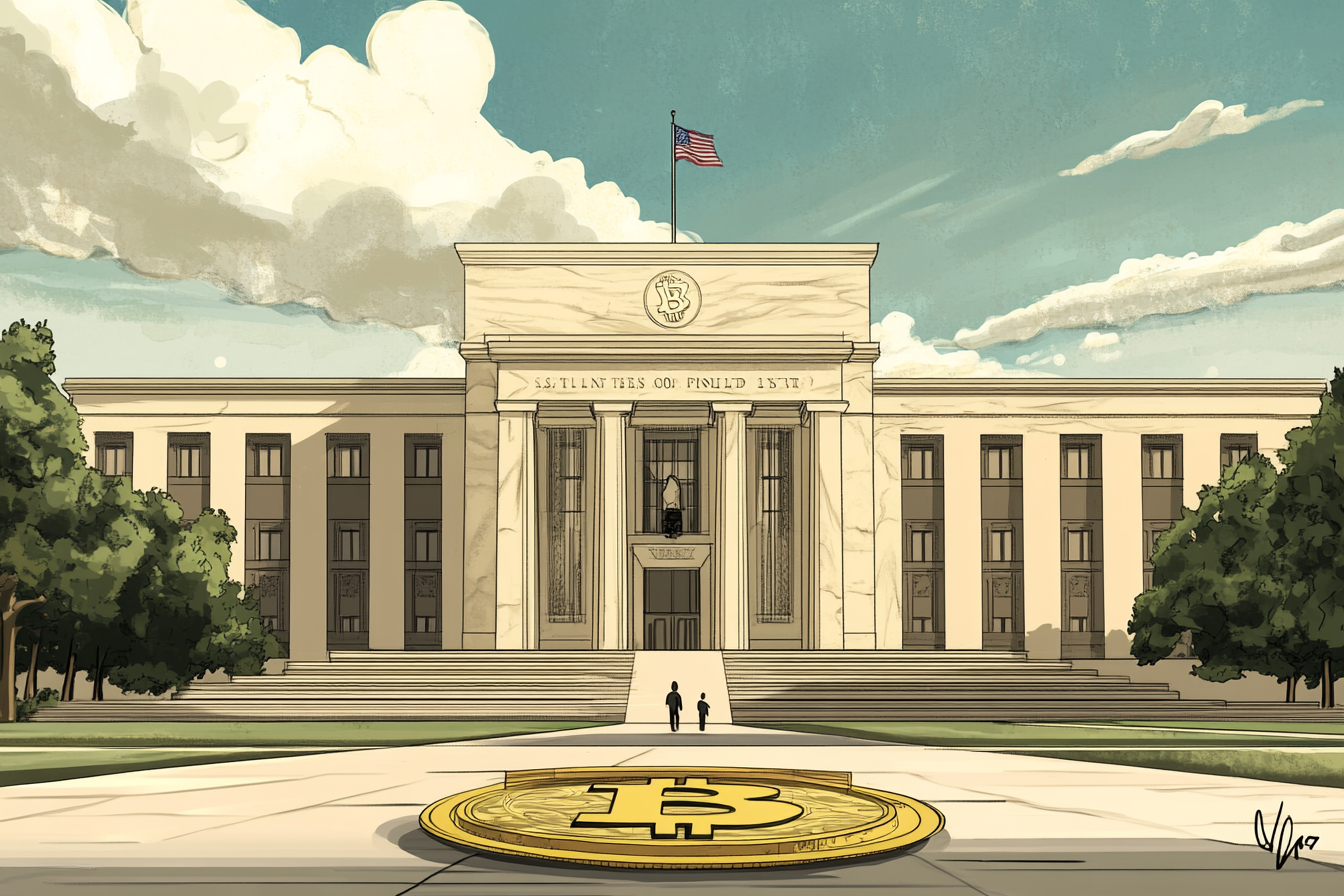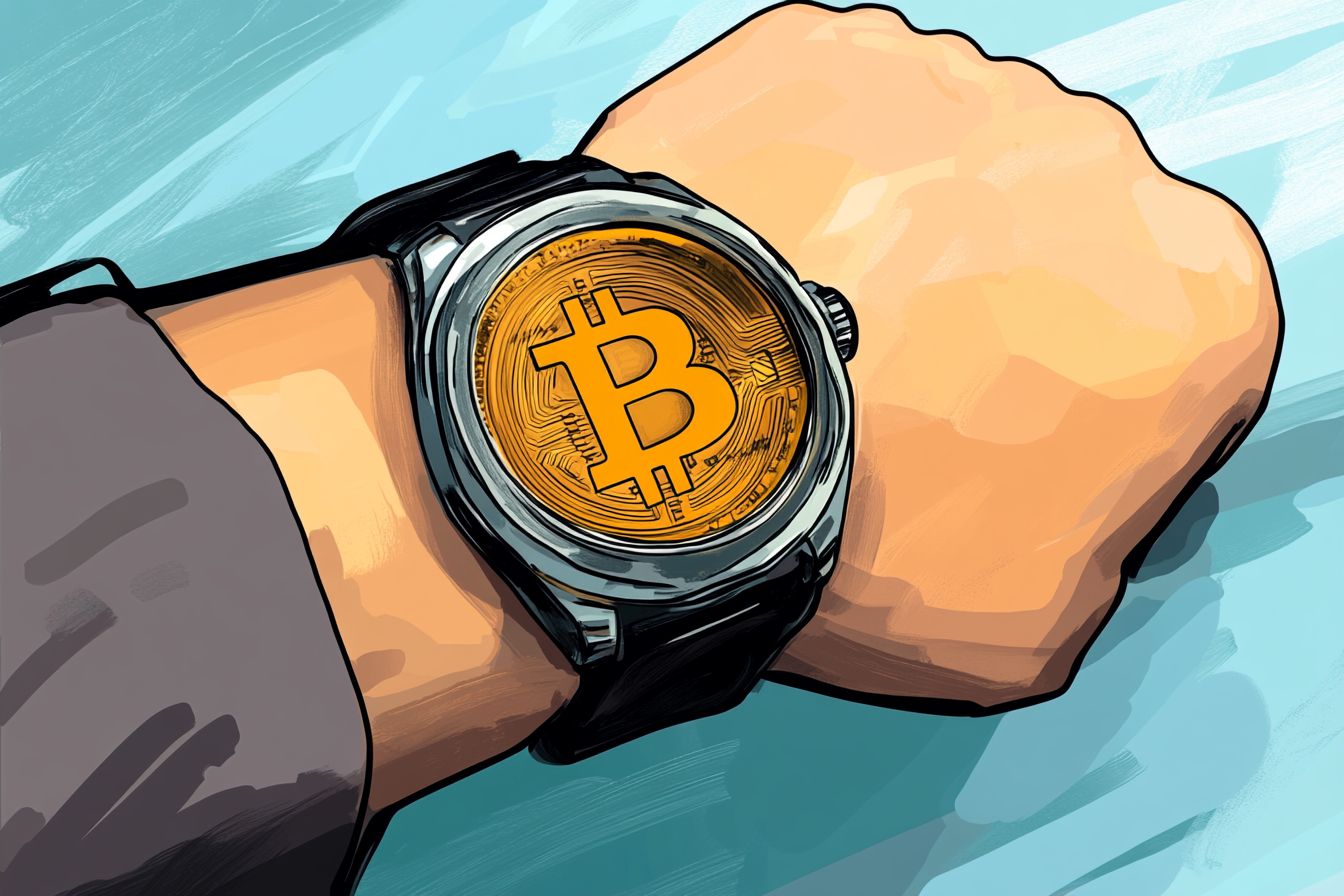Table of Contents
- Fed Rhetoric Acknowledges Priorities Have Changed
- 50 bps or BRN's 25 bps Bet
- BRN Predicts Fed to Leave the Door Open for Larger Moves
- Willingness to Be Flexible
- Bonds Risk a "Sell-The-Fact" Psychology, Even if it's Only Transitory
- Fed Event Risk Likely to Break the Soft Dollar & Crypto Trend
- Blockcast
- Events
- It's All Happening on LinkedIn
The US Federal Reserve has promised to loosen monetary policy this week and beyond significantly.
BRN bets on a 25 basis point rate cut, similar to what policymakers seem inclined to vote for in light of recent employment and inflation data.
Still, the Fed won't close the door on more forceful measures.
This summer has been very exciting, what with the Bank of Japan's rate hike on July 30 and the Fed's decision to shift focus away from inflation and towards the jobs situation during the 31st July FOMC meeting, both of which caused significant market fluctuations.
In addition, the US labour data released on August 2 needed to be more robust.
As the swelling yen fuelled worries about possible disruptions to financial markets, the market began to price in a possible Fed inter-meeting rate cut.
There was a time when the September FOMC meeting priced 60 basis points of easing, and by year-end, that number had risen to 138 basis points.

Fed Rhetoric Acknowledges Priorities Have Changed
Calm statements from central bankers and improved US figures stabilised the situation, but the likelihood of significant Fed policy easing remained evident.
Rumour has it that "several" Fed members thought the data flow "provided a plausible case for reducing the target range 25 basis points at this meeting or that they could have supported such a decision," according to the minutes of the July FOMC meeting, which revealed that a surprise rate drop had been contemplated.
Worries about inflation were easing, but worries about the employment market were on the rise.
Still, "the vast majority" of members thought it would "probably be appropriate to ease policy at the next meeting" before deciding to hold off until they had more information.
Federal Reserve Chair Jerome Powell made the unequivocal statement on August 23: "The time has come for policy to adjust; the direction of travel is clear."
A 25 basis point reduction to the discount rate — the interest rate the Fed provides to financial institutions — was later revealed to have been approved by the Chicago and New York Federal Reserve banks, adding to the signals of intention to ease overall monetary policy.
50 bps or BRN's 25 bps Bet
The next bet was the magnitude of the rate cut — 25 or 50 basis points.
BRN's preferred course of action was a 25 bps cut and not a greater cut to hedge against the possibility of future more substantial employment weakness.
The reasons are that the most recent jobs data was stronger than anticipated, and the core CPI for August came in hotter than expected at 0.3% month over month.
In light of the above, BRN can't help but think that 25 bps is the most likely result.
With 30 basis points priced in after CPI, the market was also picking up on this; with a 20% probability that the Fed will go for a 50 basis point drop, it's almost as if 25 basis points are already baked in.
However, the price has shifted to 36.5 bps as of Friday morning, representing a 46% probability of a 50 bps drop due to a rush of bets on a greater move.
BRN Predicts Fed to Leave the Door Open for Larger Moves
BRN anticipates that some FOMC members will support a 25-basis-point cut and that the outcome will be close.
In our opinion, there is sufficient justification for this action. According to business surveys, hiring and activity are on the decline.
At the same time, according to the Fed's own Beige Book, out of the eleven Fed areas in the US, only the Boston, Chicago, and Dallas Feds saw a "slight" rise in output during the preceding eight weeks.
However, given the composition of the voting FOMC members and their shared concern that inflation might stay sticky, a slim majority will likely choose 25 basis points.
But even if they do that, BRN expects Chair Jerome Powell to sound cautious during the press conference, leaving the door open for a bigger move if data worsens.

Willingness to Be Flexible
Fed projections will likely point to 200 bps+ of cuts in the current cycle, with an update to the central bank's economic forecasts.
Their June GDP and unemployment predictions were overly optimistic even then, so it's probable that there will be some major modifications.
We expect them to agree on the consensus figures, which call for three 25 bps rate cuts this year and another 125 bps next year.
BRN anticipates 100 basis points of cuts this year and 100 basis points more next.
With a 25 bps drop expected this week, the FOMC might move 50 bps in either the November or December meeting and 25 bps in each of the first four 2025 sessions. The Fed funds upper limit will remain at 3.5%.
Worsening company surveys and a significant slowdown in labour hiring will lead the Fed to front-load the easing, which will, in our opinion, help reduce pricing pressures faster than they are currently anticipating.
Bonds Risk a "Sell-The-Fact" Psychology, Even if it's Only Transitory
The 10-year Treasury yield has historically fallen in tandem with the expectation and subsequent implementation of many rate cuts.
The 10-year yield has fallen by almost 100 basis points since June, signalling the beginning of the anticipatory phase.
Now, we may move on to the delivery phase. Can the 10-year yield fall any further?
That is the major question. The current level is at 3.65%.
A way to 3.5%, or approximately halfway there, has been on the table for a while.
A future market discount of the fund's rate to the 3% range would make anything lower appear extraordinary.
We are being cautious in our direction for two reasons. To begin with, the 10-year yield does not often fall to the same levels as the funds rate does during a recession.
Also, a 10-year SOFR rate of about 3% is in line with a 10-year Treasury yield of about 3.5% or slightly less.
That's at the floor rate for discounted future money. Thus, it should be considered stable.
Since it is possible for this floor to go lower, it is obviously a variable.
Still, given our current situation, longer-term SOFR rates should not be trading below the funds rate's implied floor.
Thus, there is a way for longer-tenor rates to drop even further as we enter the first cut of the cycle.
For prices to drop significantly, the market would have to consider a more substantial relaxation than what is currently discounted.
BRN anticipates that the Fed will generally descend towards the now-discounted levels. However, settling marginally higher than lower for 10-year rates is more probable, which ought to be the extent of the downside.
Last but not least, remember that the delivery of the first-rate cut does not ensure that the 10-year Treasury yield will also decline.
One period when the Fed started decreasing rates was in the mid-1990s when the 10-year yield increased.
A 50 basis point increase preceded the following decline of the 10-year yield to a new low.
There is a "sell-the-fact" case for a reactive increase in the 10-year yield before this first-rate drop.
However, if that occurs, we may anticipate a reversal that lasts many weeks before yields go back down.
Fed Event Risk Likely to Break the Soft Dollar & Crypto Trend
Cryptos still need to muster the Fed-driven charge in risk assets in terms of the pace.
Over the past month, Bitcoin has been down 1.7%, even as the top token has surged nearly 120% over the past year.
An argument in support of a counter-trend dollar rise and lower cryptos would be attractive if the Fed cuts rates by only 25 basis points on September 18 and the Dot Plots are less dovish than the markets are pricing them.
That might be true, but we see it lasting only a short time if so.
Chair Powell has been more dovish in his press briefings this year, and he has more reasons to be dovish now than he did previously.
Equally, discretionary rather than forced rate cuts from the Fed – consistent with a soft landing – should ultimately prove negative for the dollar and positive for cryptos.
This would be consistent with risk assets staying relatively supported and the dollar starting to sit in the more bearish sweet spot of the dollar smile curve.
Expect FX traders to continue to express the softer US rate story through USD/JPY.
This pair is one of the most sensitive to US rates, and lower oil prices and the prospect of BoJ hikes help the yen.
It also serves as a hedge should US equities re-price for a weaker growth outlook.
Blockcast
This week marks the first iteration of Blockcast hosted by Copper Head of Revenue APAC, Takatoshi Shibayama, who will take on the role of host in upcoming episodes.
Events
Token2049 (Singapore, 18-19 September 2024)

Use Blockhead's exclusive discount code BLOCKHEAD10 for 10% off ticket prices.
All That Matters (Singapore, 16-18 September 2024)

The 19th All That Matters is the gateway to the APAC Music, Sports, Gaming, Marketing, Web3, Arts and Entertainment industries.
Conference by day and live music festival by night, ATM is Asia’s premiere ‘Business 2 Business 2 Fan’ event experience bringing together world class speakers with more than 2,000 senior executives.
Get your tickets now with Blockhead's 15% off code: ATM24BLOCKHEAD15
GeckoCon (Bangkok, 11 November 2024)

GeckoCon returns, and this year we're diving into the revolutionary world of Web3 Gaming! Discover how the fusion of blockchain and traditional gaming is creating a whole new entertainment layer.Don't miss out—visit CoinGecko now to secure your spot in our first ever Hybrid Conference set to take place in Bangkok, Thailand. Or from the comforts of your home!
Get your tickets now with Blockhead's 40% code: BHGC24
[Limited to 30 redemptions, expires 12 September 2024]
It's All Happening on LinkedIn
Did you know you can now receive Blockhead's juicy daily newsletters directly to your LinkedIn? Subscribe to our LinkedIn newsletters for the latest news and insights in the world of Web3!
There also might be the occasional discount code for the industry's hottest events, exclusively for subscribers. So be sure to sign up!













